Leica Monochrom: why B&W digital cameras are awesome
If you think the Leica Monochrom is just a software restriction, or a gimmick, you're completely wrong...
When most photographers hear about the Leica Monochrom cameras, they assume Leica simply disabled color processing in software. They imagine a standard color sensor with software b&w conversion applied at the firmware level. This misconception couldn’t be further from the truth, and my real test with both cameras proved just how different these two technologies truly are.
Understanding the Monochrom sensor: why it’s fundamentally different
As I said, the Leica M10 Monochrom doesn’t convert color images to black and white. Instead, it captures black and white at the hardware level through a completely different sensor architecture. Here’s what makes it unique.
The Bayer Filter issue in color sensors
Every color digital camera, including the M10-R, relies on something called a Bayer filter array. This filter sits directly on top of the sensor and blocks specific wavelengths of light from reaching each photosite. The pattern looks like this:
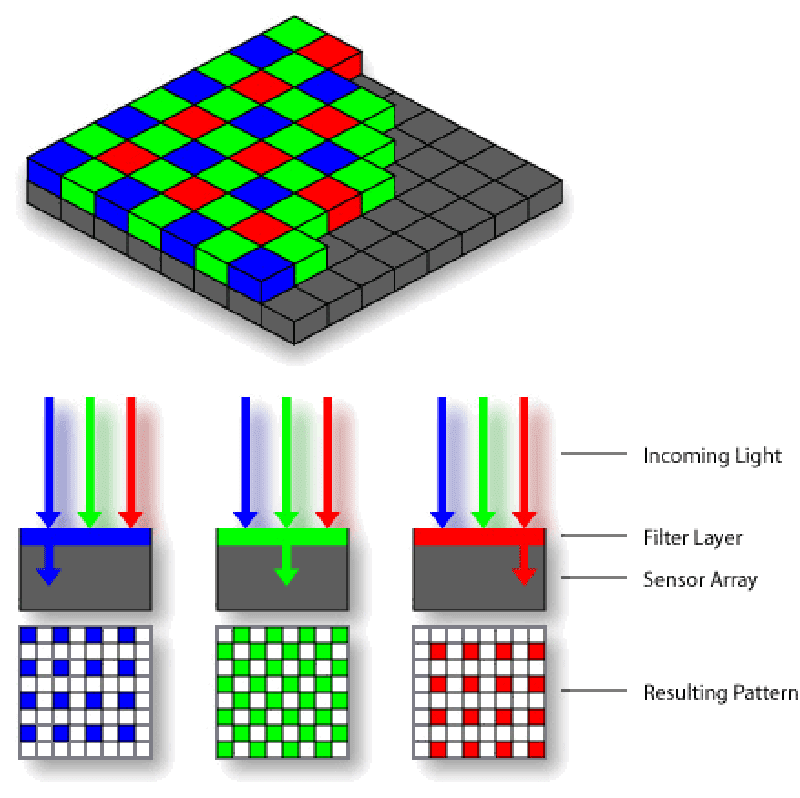
In this arrangement, 50% of photosites receive only green light, 25% receive only red light, and 25% receive only blue light. Each individual photosite can’t see the full spectrum. The camera’s processor must interpolate the missing color information for every single photosite through a process called demosaicing.
This creates three problems:
Lost Light: The color filters absorb roughly 1 to 2 stops of light. A red filter blocks green and blue wavelengths completely. A green filter blocks red and blue. The photosites never see the majority of incoming photons.
Reduced Resolution: Since each photosite only captures one color channel, the camera must guess at the other two colors by examining neighboring photosite. This interpolation inherently reduces true captured detail. A 40-megapixel Bayer sensor doesn’t truly resolve 40 megapixels of detail.
Blur from Demosaicing: The algorithm that reconstructs full-color information must blur slightly across photosite boundaries. This softens fine details.
The Monochrom advantage: no Bayer Filter Array
The M10 Monochrom removes the Bayer filter array entirely. The sensor has no color filters. Every photosite receives the full spectrum of visible light. Each of the 40 million photosites captures luminance information independently, without relying on its neighbors.
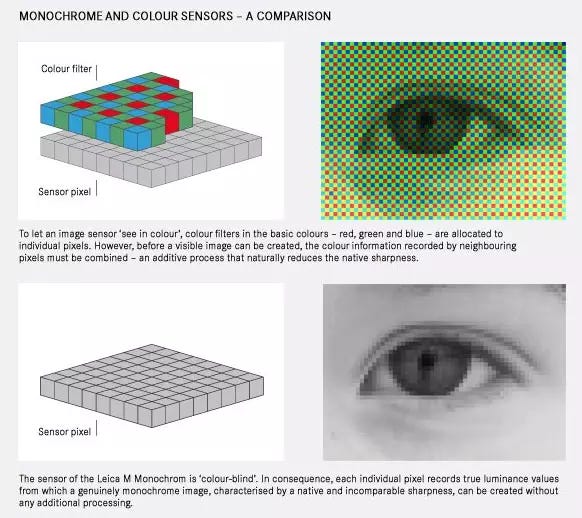
This fundamental difference creates measurable advantages:
More Light Per Photosite: Without filters blocking two-thirds of the spectrum, each photosite collects significantly more photons. This translates to cleaner files at higher ISO settings.
True Resolution: All 40 megapixels contribute independent information. There’s no interpolation, no demosaicing blur. What you see is what the sensor actually resolved.
Better High-ISO Performance: With more light reaching each photosite and no need to mathematically construct missing information, the Monochrom produces cleaner images at extreme sensitivity settings. Some tests place it alongside medium-format cameras for high-ISO capability.
Think of it this way: imagine trying to read text through colored sunglasses, then having to guess what the text would look like without those glasses by combining multiple glimpses through different colored lenses. Now imagine simply removing all the glasses and reading directly. That’s the difference between a Bayer sensor and a monochrome sensor.
The Camera Clara ultimate test: Chinatown at dusk
I borrowed my friend Brian’s M10 Monochrom for this comparison. On a clear evening, I mounted both cameras side-by-side on a dual camera plate and headed to Chinatown. The shoot ran from 6:00 PM through 8:30 PM, giving me the perfect transition from golden hour into blue hour and evening darkness.
For consistency, I used the same focal length lens across both cameras, and tried to match the composition as much as possible by using a dual mount plate (you should see me with $20k usd in camera value hanging on my neck, haha, quite hilarious).
All comparisons shown here use JPEG files straight from the camera. I avoided RAW processing or denoising, because I wanted to see what each camera delivers without post-production manipulation.
Test 1: Mirrored Settings
This formed the bulk of my testing. Both cameras received identical settings:
Shutter speed: 1/125 second (kept consistent for most shots)
Aperture: matched across all exposures
ISO: identical sensitivity settings
The goal was simple: eliminate every variable except the sensor itself.
Walking through Chinatown’s streets as the light faded, I kept settings perfectly matched across both cameras. With identical shutter speed at 1/125, aperture, and ISO, I wanted to see pure sensor differences without variables.
Up to ISO 3200, both cameras performed remarkably similarly. The JPEGs from each showed comparable detail, tonal gradation, and noise characteristics. The M10-R’s monochrome conversions held up beautifully, and I could barely tell the files apart at these ISO sensitivity levels.
The Monochrom’s advantage emerged when light got scarce and ISO climbed past 3200. Here’s where the sensor architecture made its presence known: the Monochrom maintained image quality while the M10-R started showing strain. But the real benefit wasn’t just cleaner files at high ISO. The Monochrom’s superior light-gathering capability meant I could use faster shutter speeds (or closed apertures) in darker conditions without sacrificing image quality. Where the M10-R forced me to slow down my shutter or accept noisier files, the Monochrom let me maintain 1/125 or faster, keeping subject motion frozen even as darkness fell.
Test 2: Extreme ISO settings
I started experimenting with higher ISOs, beginning at ISO 12,500. The differences were already noticeable on the camera’s LCD screen right after shooting. Later, viewing the files on my computer without any cropping or zooming, the gap between the two cameras became quite clear.
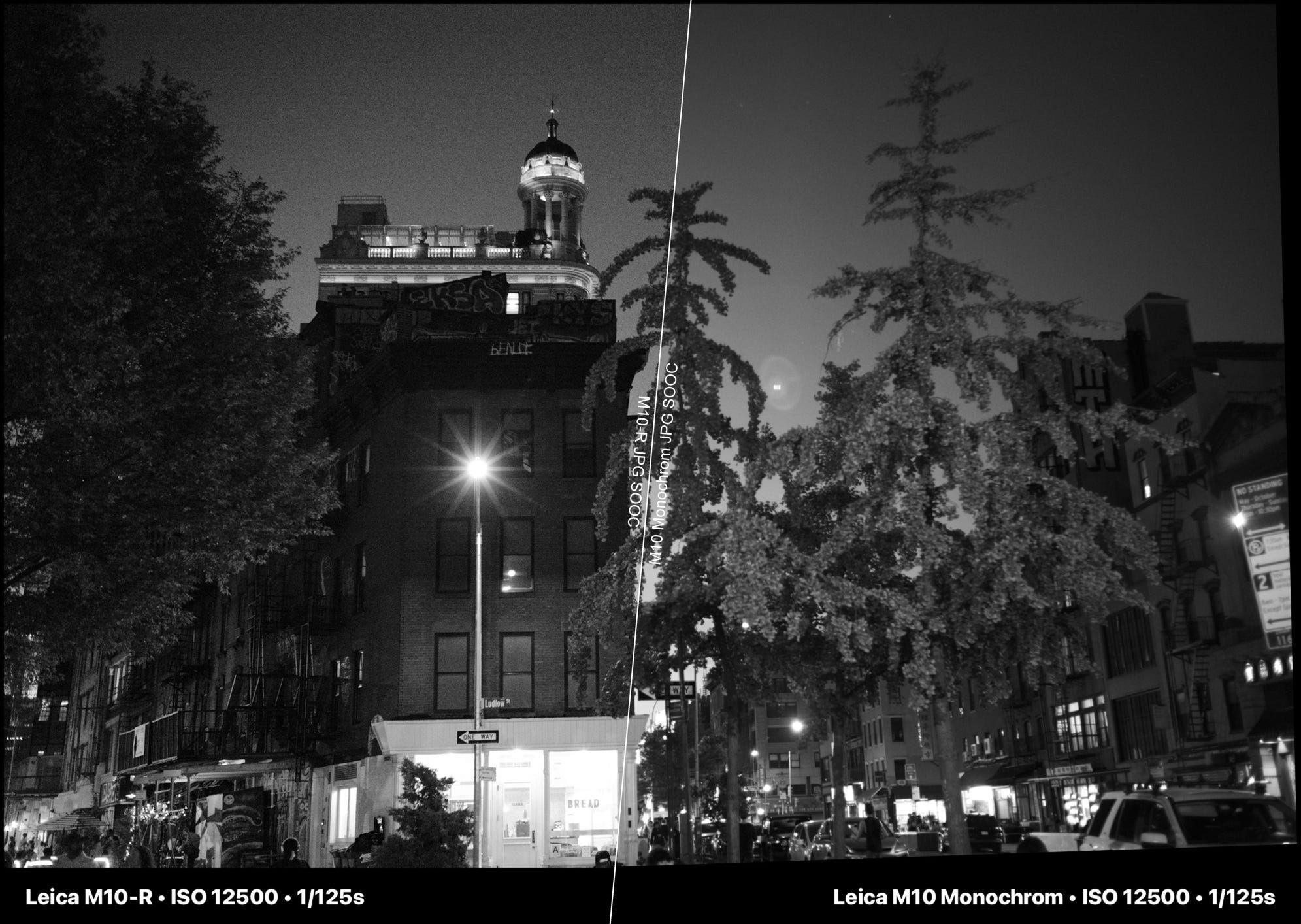
Then I cranked both cameras to ISO 50,000, the maximum the M10-R can achieve. The Monochrom can actually push higher, though I didn’t explore its upper limits in this test (although I should, just for fun).
At ISO 50,000, the difference becomes absolutely dramatic, even at no crop. The M10-R’s files showed significant luminance noise and reduced detail. Fine textures merged into mush. Color information (before conversion to black and white) degraded noticeably, which affected tonal separation in the monochrome conversion.
The Monochrom at ISO 50,000? Perfectly usable files. Yes, noise was present. But the character of the noise felt more like film grain than digital artifacts. More importantly, details remained intact. I could still read small text on signs. Facial features stayed sharp. The images looked like intentional high-ISO film photography rather than digital compromise, something like a Kodak TriX 400.
This isn’t surprising when you understand the sensor architecture (which now I’m glad you do). As you learned, with more photons hitting each photosite, the Monochrom maintains better signal-to-noise ratio at extreme sensitivities. The lack of demosaicing means details don’t get smeared away by interpolation algorithms fighting against noise.
Test 3: Optimized settings for each camera (a.k.a. working with what I have in my hands)
Using an ISO of 50,000 instantly took me to the question: "do I actually need this?"
With that in mind, for the third test, I shot the way I would actually use each camera individually. I stopped worrying about matching settings and instead maximized each camera’s strengths.
With the M10-R, I kept ISO reasonable (6400 maximum), and used wider apertures when needed, and relied on the camera’s excellent dynamic range when it has a little more light coming in. That brought an interesting reflection: would it worth investing more on fast lenses, like a Noctilux f/0.95, rather than investing in a Monochrom camera?
That’s an interesting, and for sure valid thought, since you can reuse the lenses in other M cameras. The Monochrom is the price of a Noctilux.
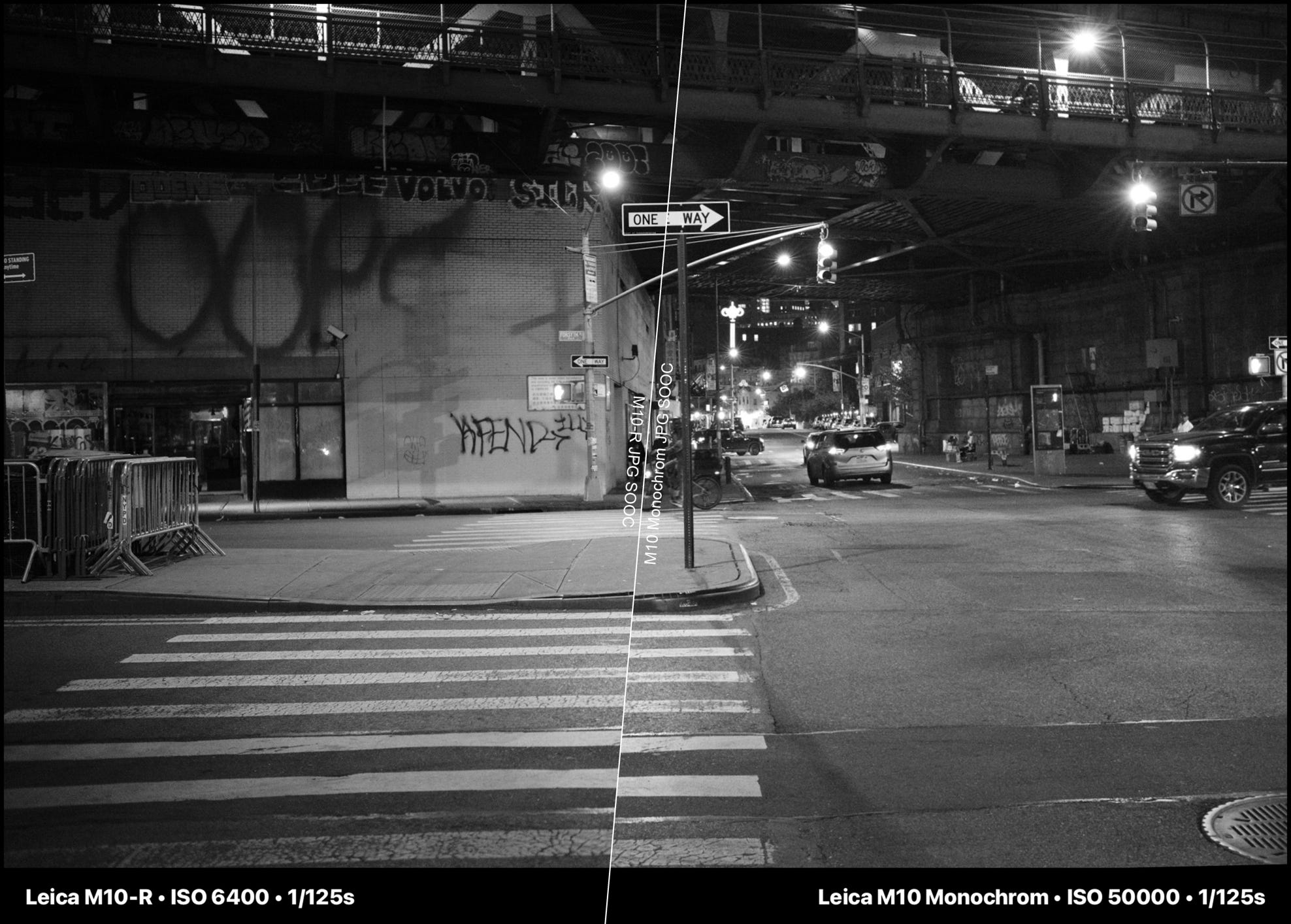
With the Monochrom, I pushed boundaries. Here’s where it got interesting: I scored night scenes at f/16 and 1/125 s.s. without sacrificing image quality. This camera basically has night vision mode! On a color camera, those settings would force things out and produce barely usable files for commercial usage. The Monochrom handled it gracefully.
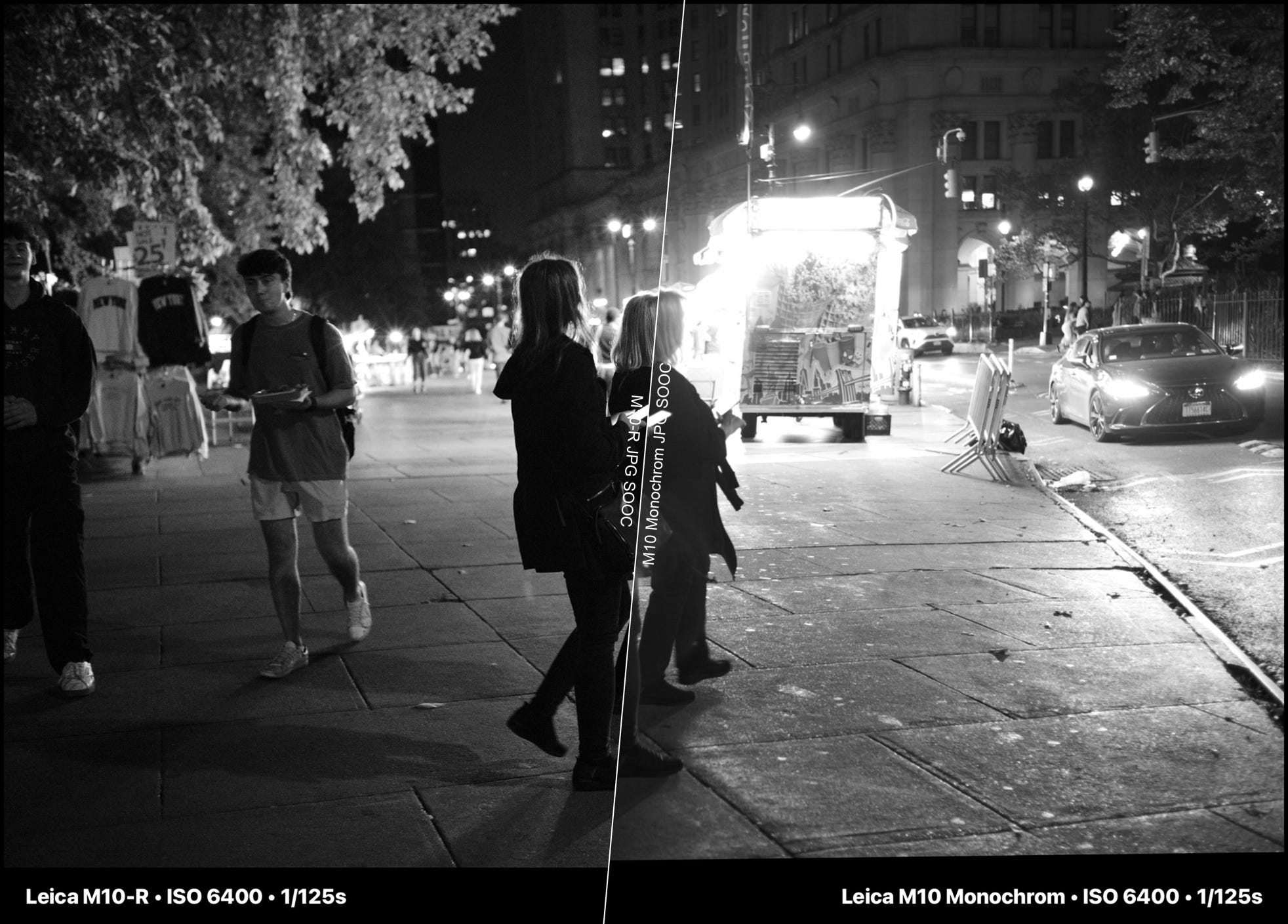
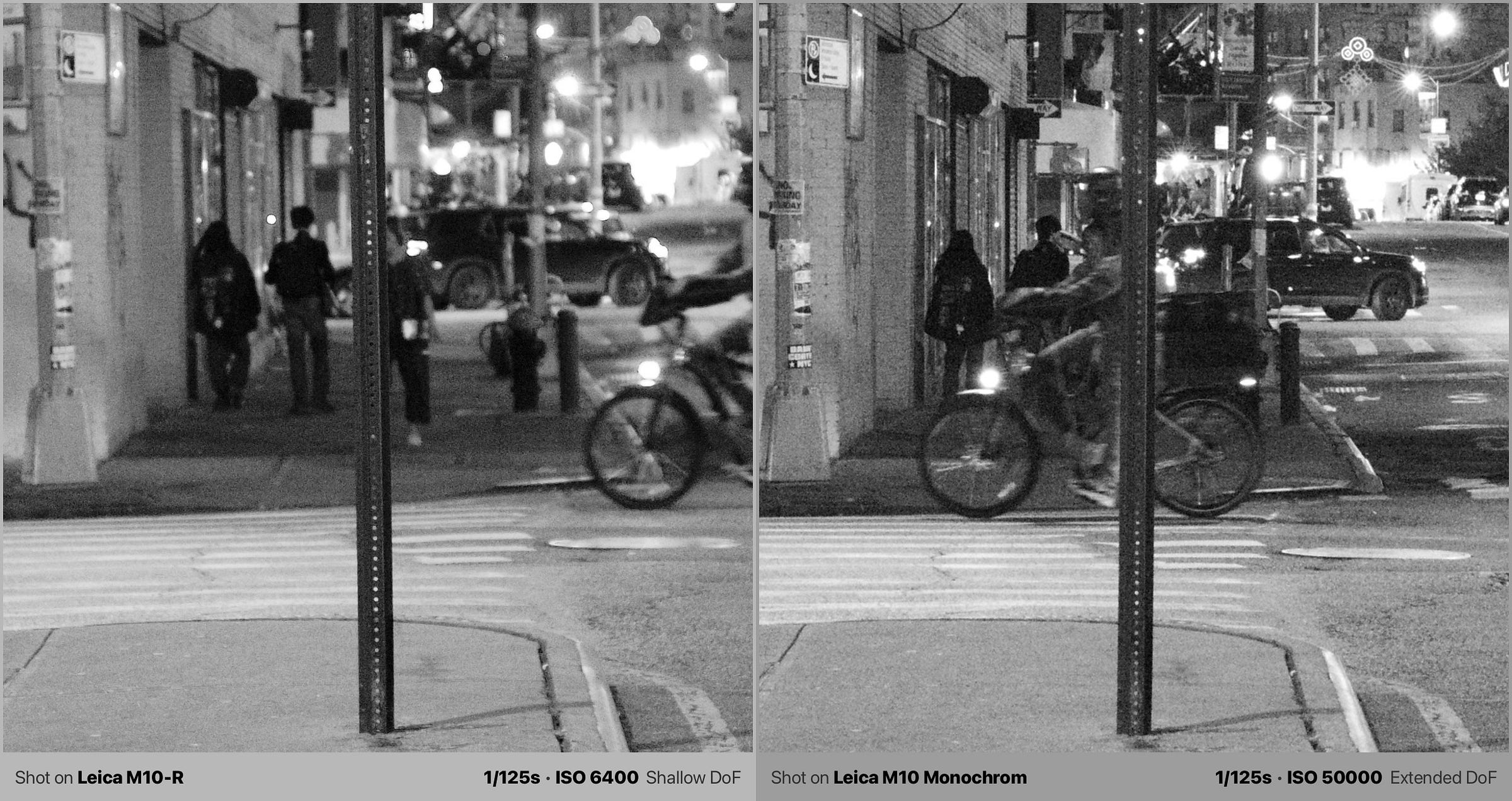
Want to stop down for maximum depth of field during twilight? The Monochrom makes it possible without compromise. Need to freeze motion in dim light without dragging your shutter? The Monochrom delivers. These aren’t theoretical advantages. They’re practical capabilities that change how you approach photography in challenging light.
What this means for photographers?
The M10-R produces excellent black-and-white images, especially when you can keep ISO moderate. It offers tremendous flexibility through RAW processing, where you can adjust color channel contributions to the monochrome conversion. This emulates using color filters on the lens and provides creative control impossible with a dedicated monochrome camera.
But the M10 Monochrom isn’t just the M10-R with a monochrome JPEG preset. It's actually stupid thinking that Leica would do that and charge a premium.
At the hardware level, it *is* differently, because it collects more light. It resolves true detail rather than interpolated approximations. And when light gets scarce, it keeps producing images while other cameras struggle.
The question isn’t which camera is better. The question here is what kind of photography you do. If you need color flexibility or want to convert color images to black and white in post-processing, the M10-R excels. If you commit to black-and-white photography and regularly work in difficult lighting, the Monochrom offers genuine technical advantages, at an insane high price that, in my opinion, is only justifiable if you are a famous photographer for shooting black and white scenes at night.
My evening in Chinatown confirmed what the sensor physics promised: removing the Bayer filter array isn’t a gimmick. The difference is real, measurable, and visible in the files. Whether that difference matters for your photography depends on your priorities.
Ok, who wins?
Both cameras share the same body design, controls, and lens mount. The sensor is the only meaningful difference, but that difference is profound. I like doing these reviews without giving a veredict, because I am tired of people over the internet trying to shape opinions about everything. As a mature person and avid reader of critical thinking content, you should be able to read something and take your own conclusions.
Thank you for reading
I have access to Brian’s M10 Monochrom any time. Would you like to see any specific testing that I didn't perform in the above review? Drop a comment and let me know!
Also, if you would like to read more interetsing comparisons and insights like this one, consider subscribing to Camera Clara.
The Portuguese version of this article is available here:



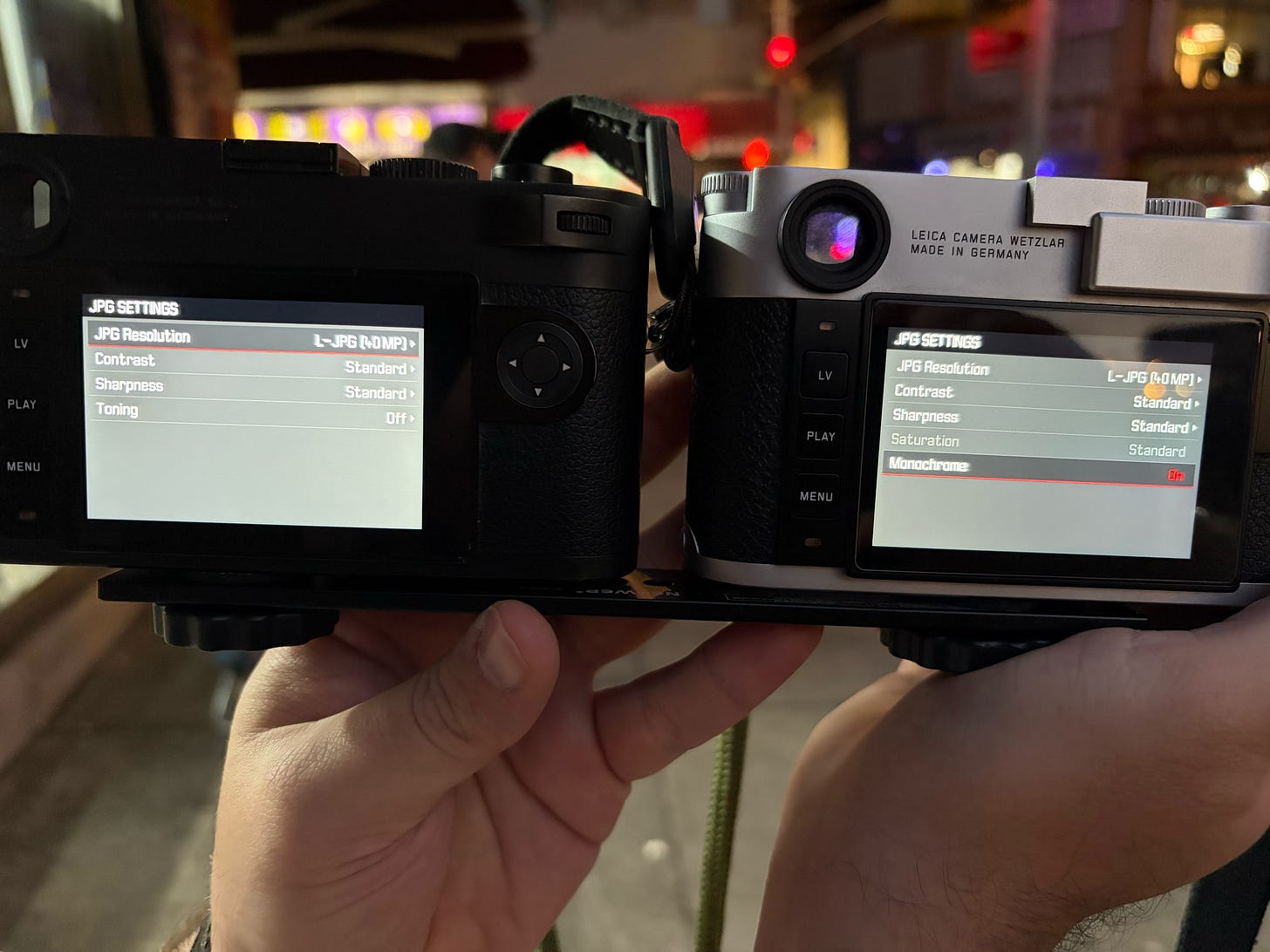
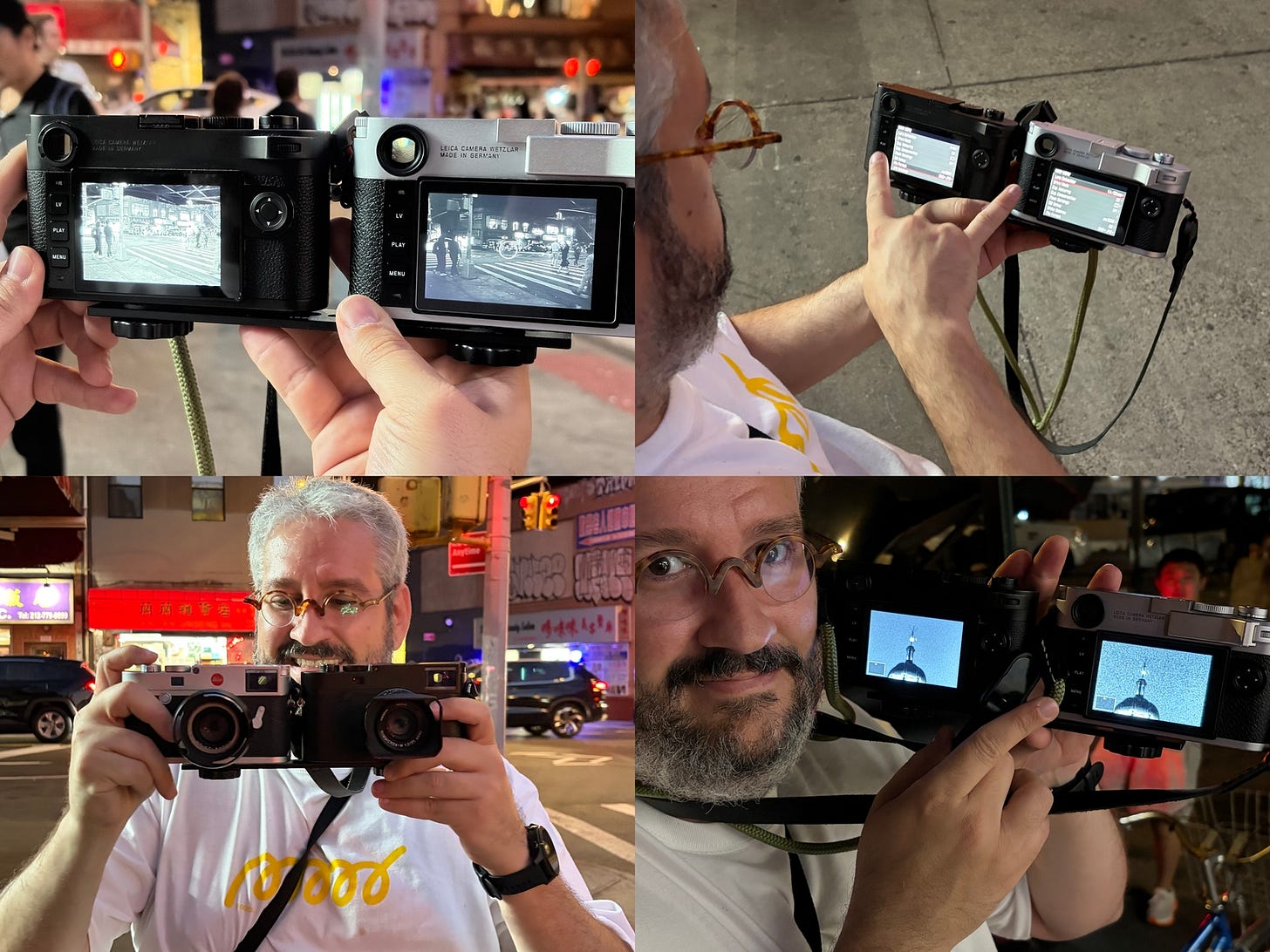
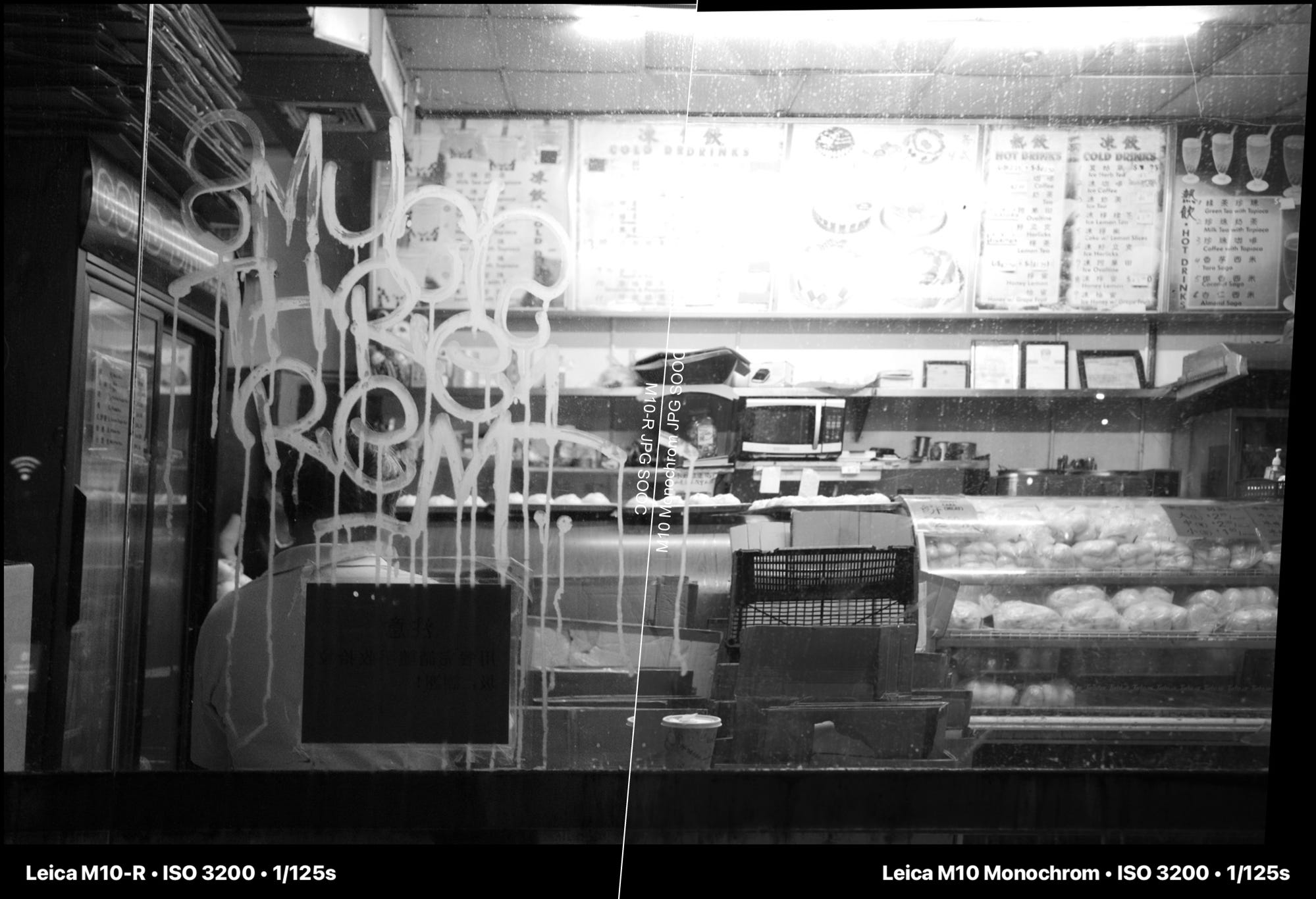
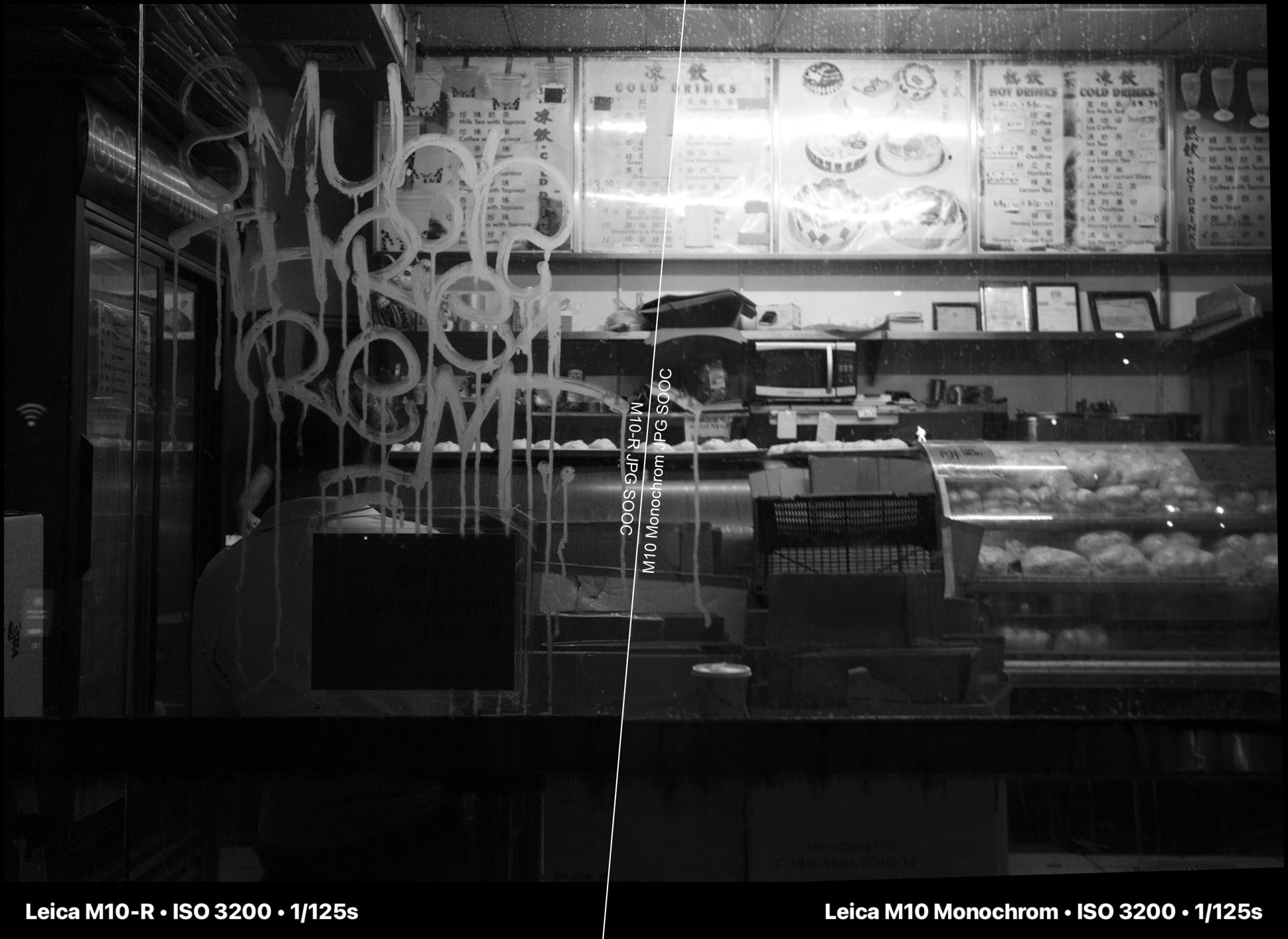
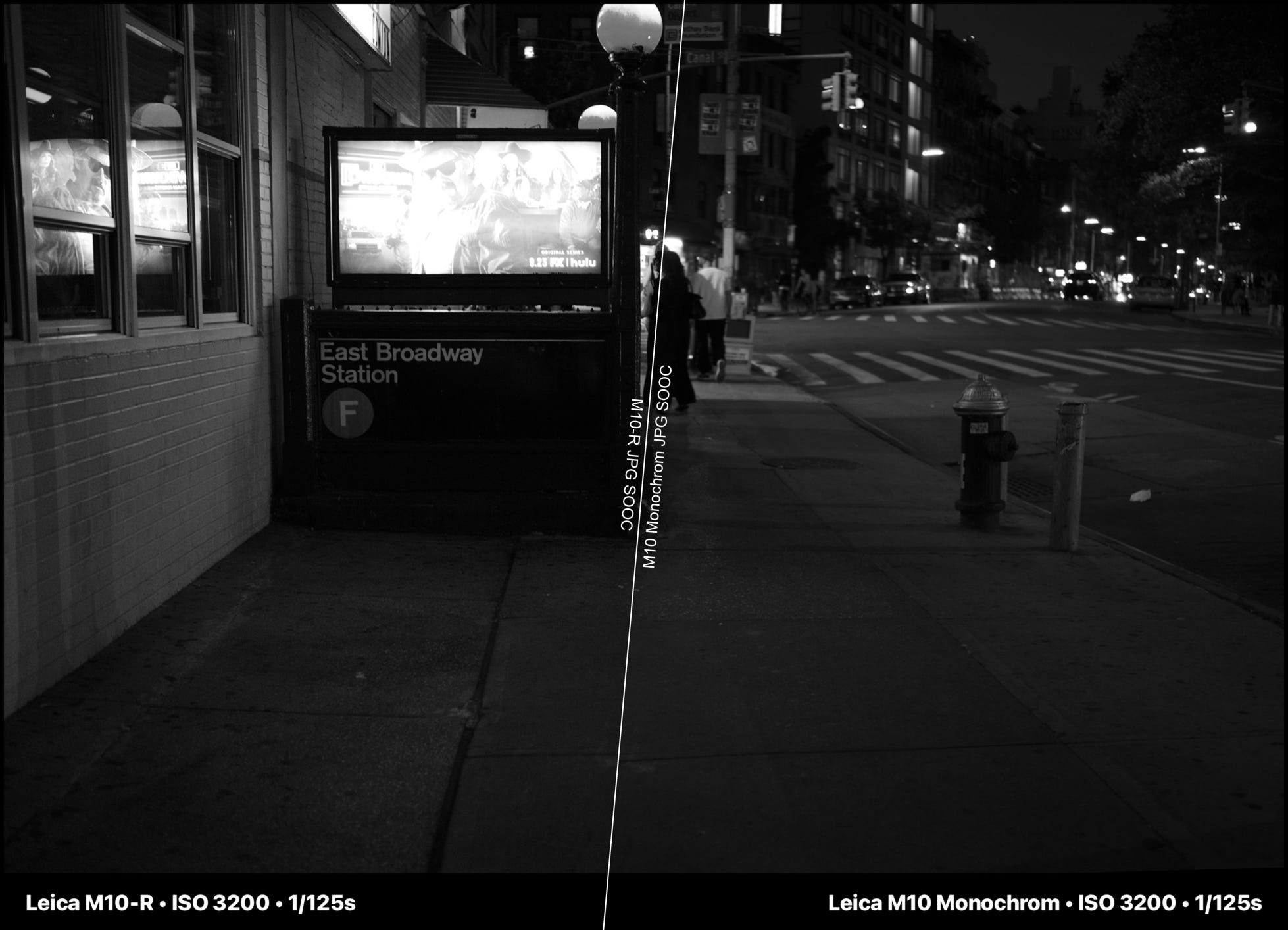
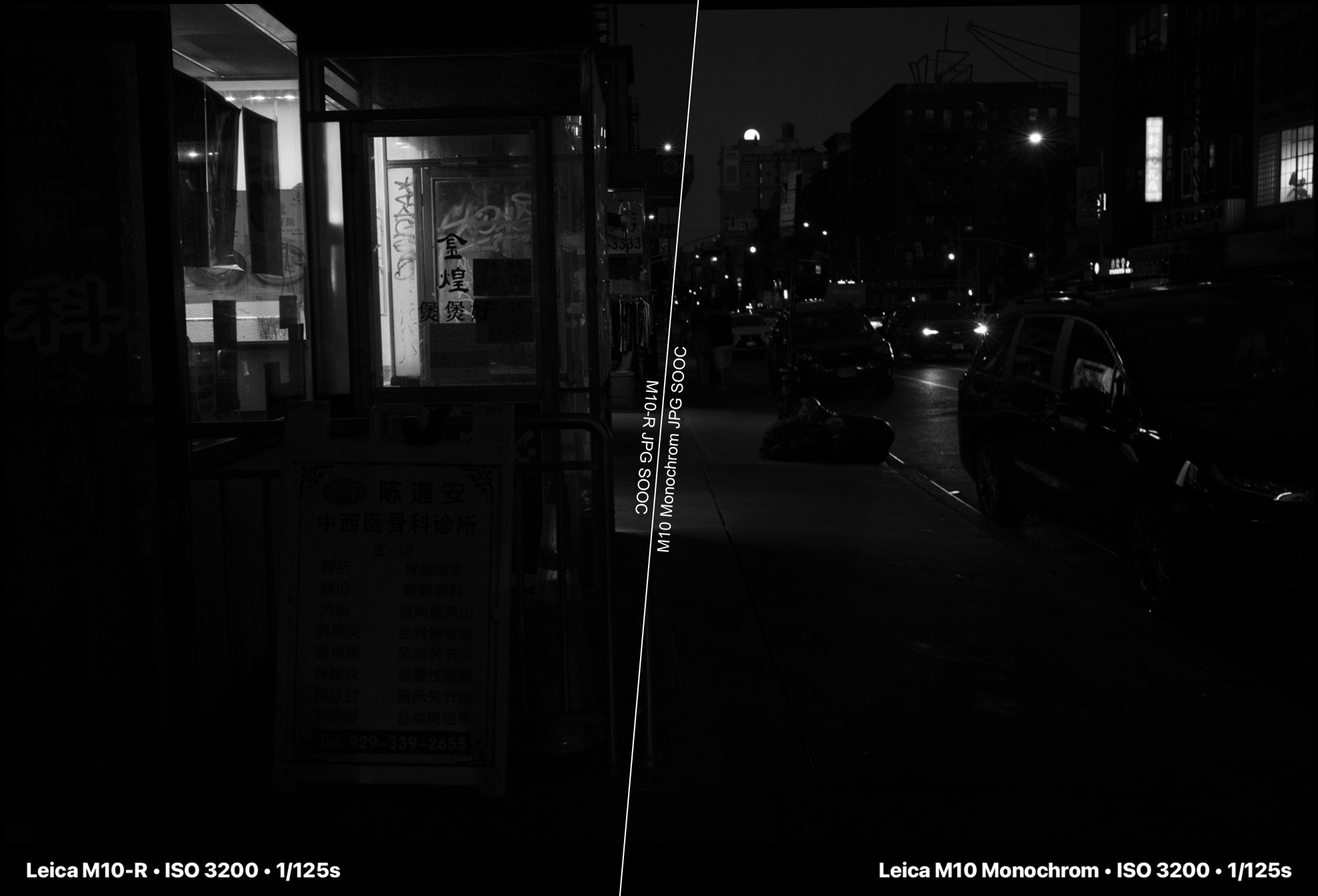
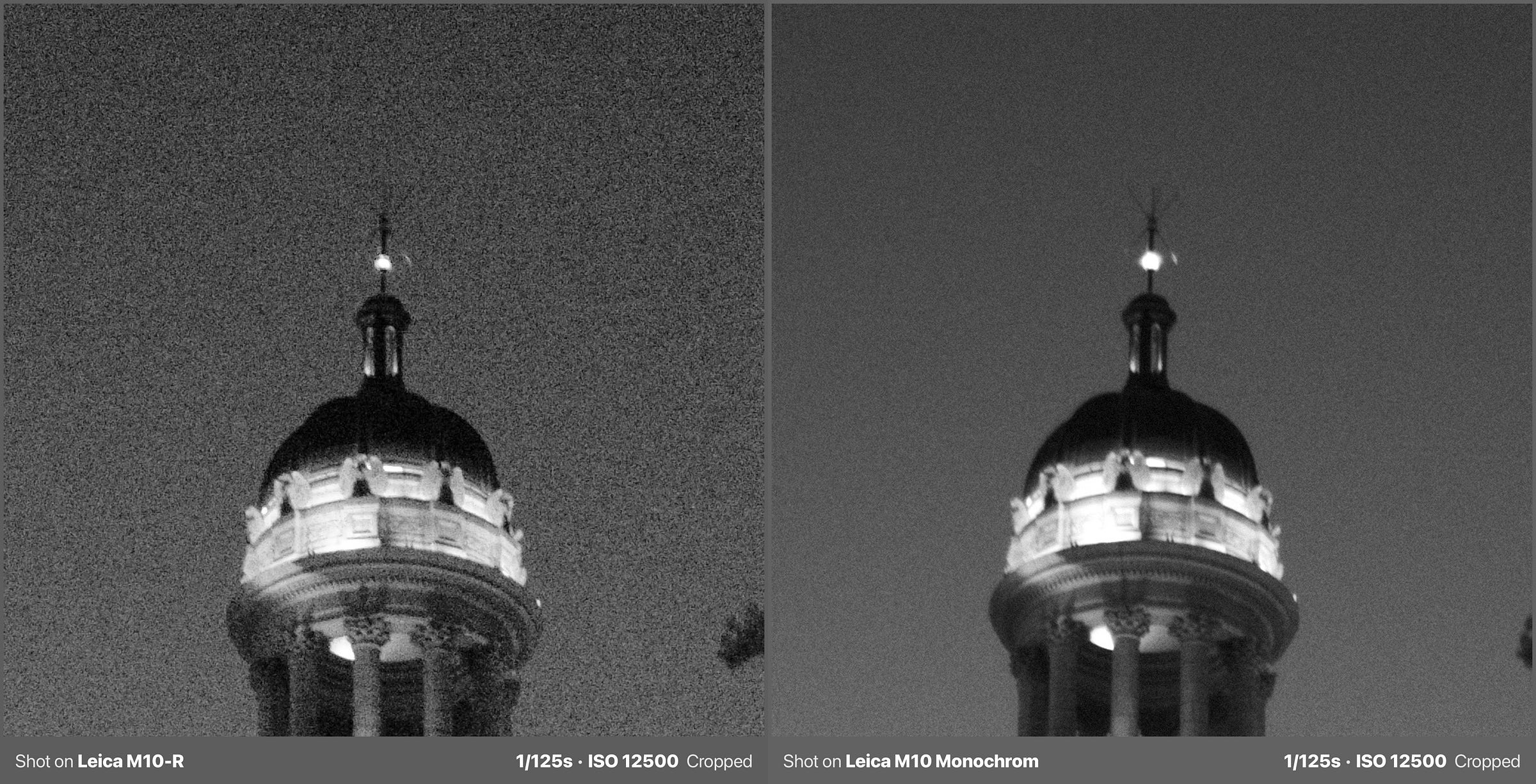
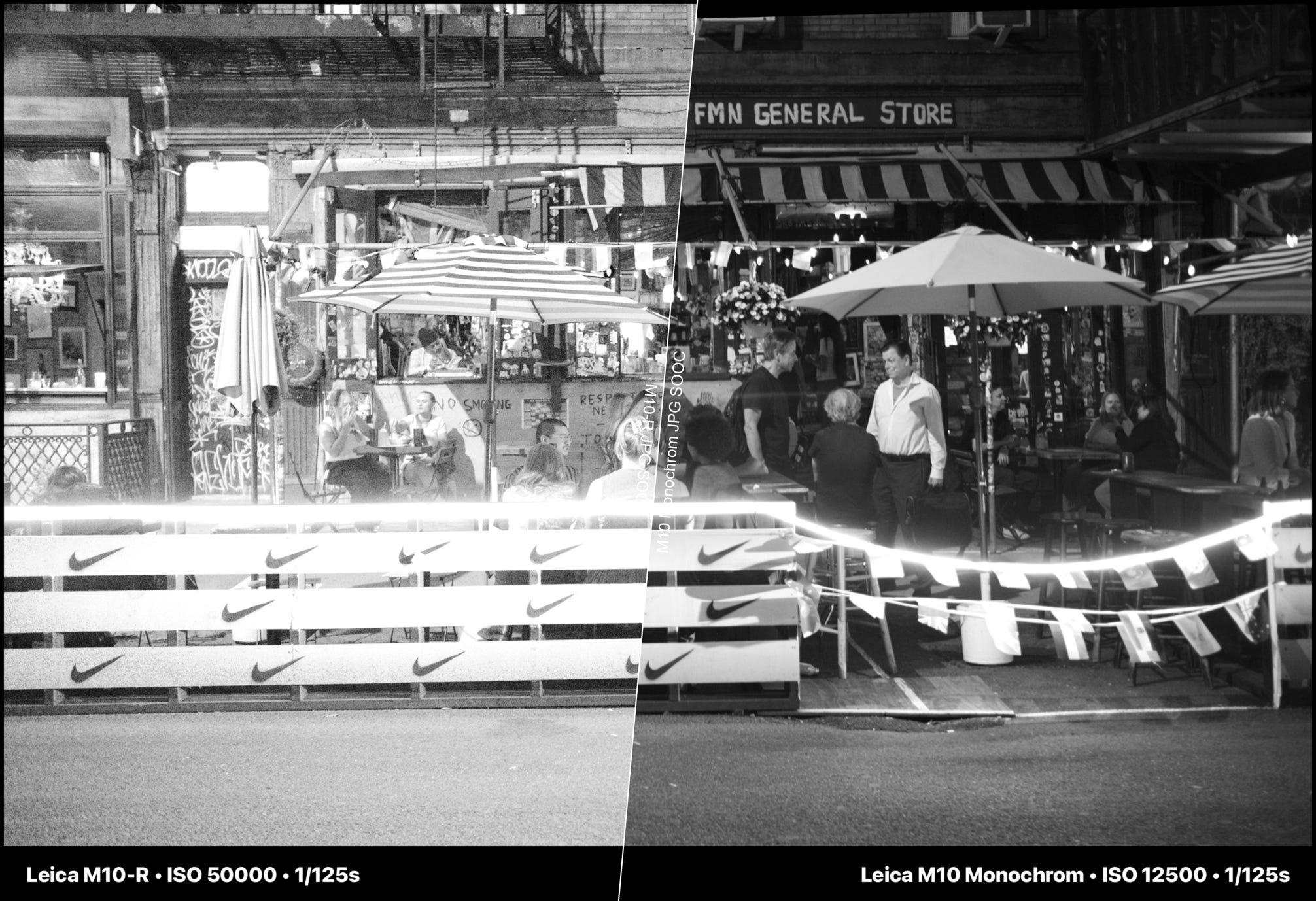
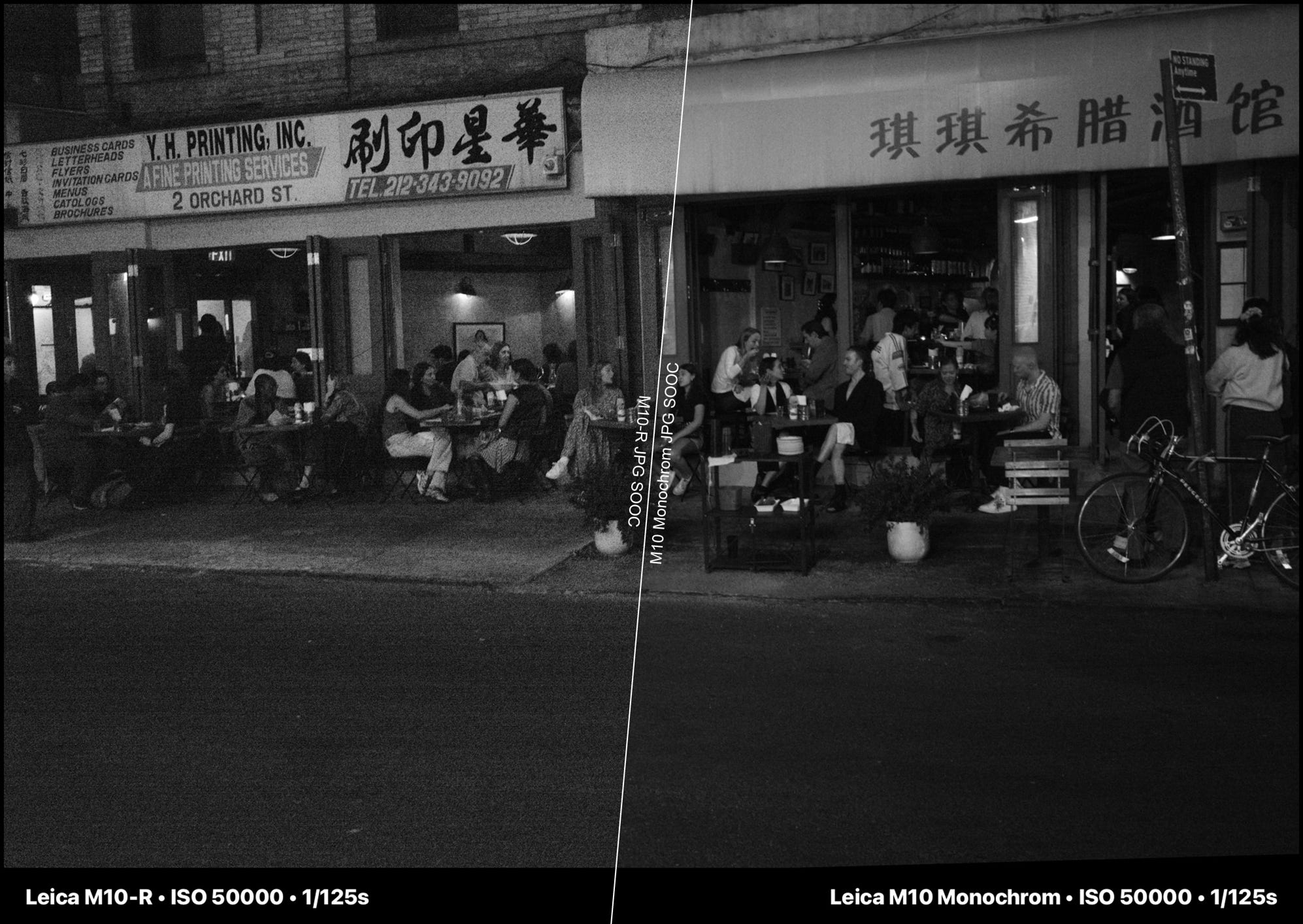
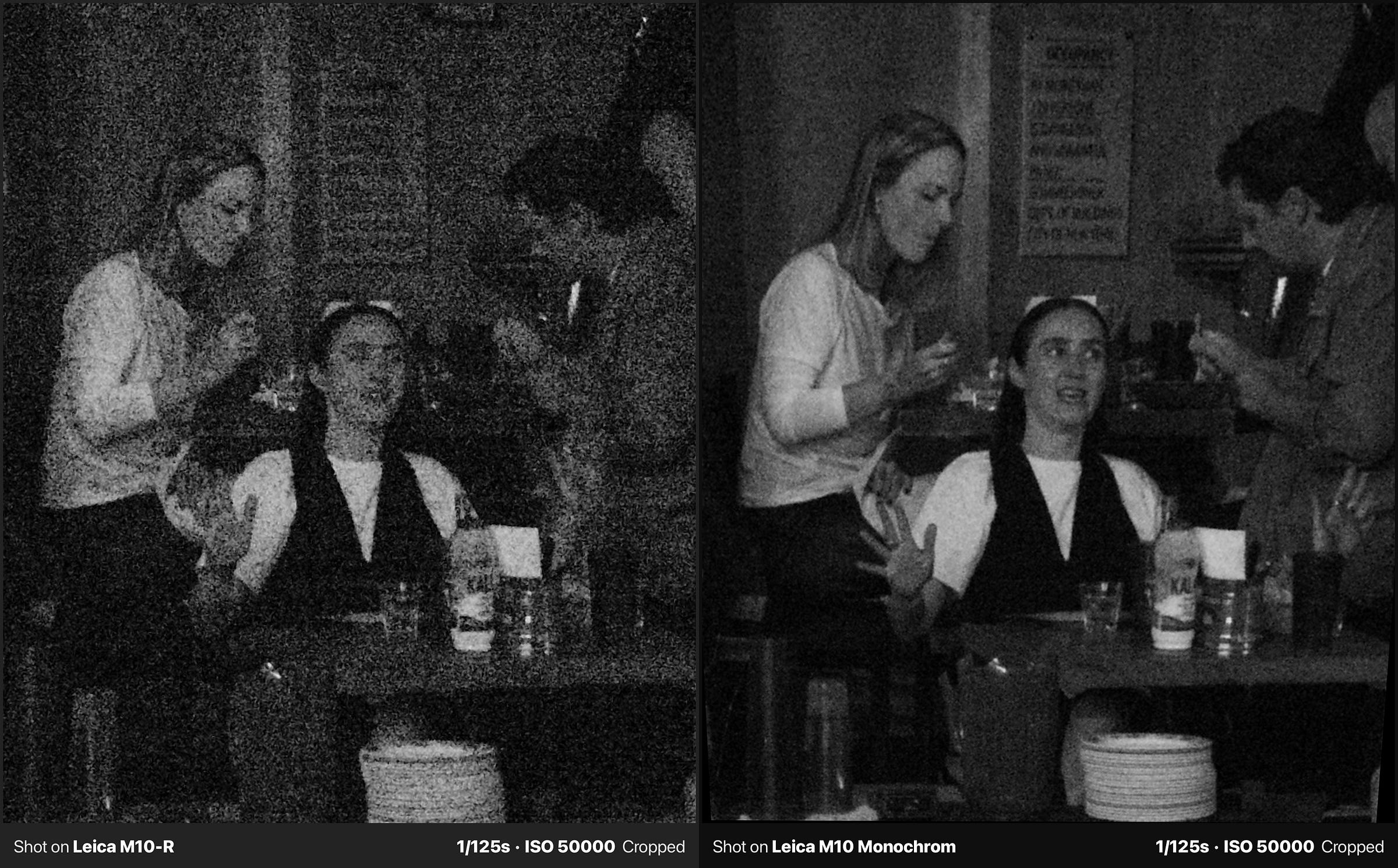

Great article, Rafa! I think you went to the very heart of the matter on the technical aspect of B&W photography. The higher resolution possible with monochrome sensors matters only to pixelpeepers, while its low-light capability is phenomenal, as you just demonstrated in a real-life comparison. I just want to highlight another aspect, the artistic one: if you’re looking at the scene and composing through a viewfinder of a Leica M, you’re still seeing colors, which may distract your vision from what matters most in monochrome imagery, which are shapes, lines, texture and tonal gradation. In this respect, I’d prefer a Q2 Monochrome or, even better, a Q3 43 Monochrome (when will Leica announce it?), where you don’t have an option of seeing colors when you’re composing your picture. Anyway, congrats, very good job!
Excellent as always!